Report
 }
}
Executive summary
Building personalized relationships at scale
India is seeing rapid growth in digitization, with more than 650 million Indians now active on social media (e.g., Facebook, Instagram, and YouTube) and messaging platforms (e.g., WhatsApp). Despite this massive engagement, only 30% of users (approximately 200 million) shop online. A similar story unfolds among small merchants, with only 15% (approximately 5 million) of the 30 million formalized small businesses (registered on the Udyam portal) selling online. With most future online shoppers and sellers already present within the digital funnel, India presents a significant untapped opportunity.
Written in collaboration with
Written in collaboration with

Most existing and upcoming apps across products and services are targeted toward the 200 million savvy digital users. However, app adoption is relatively limited beyond the top categories (social media and messaging, entertainment, Unified Payments Interface [UPI], and horizontal marketplaces). Even in high-frequency categories (e.g., grocery, banking, and mobility), maximum monthly active users top out at 35 million. There are early indications of app fatigue, with 65% of savvy digital users finding app downloads frustrating and 40% abandoning a purchase if pushed to install apps. The next 450 million non-savvy digital users are still not ready to adopt apps, driven by a preference for assisted shopping, limited phone storage, and difficulty navigating apps. Consequently, the app-led model will likely plateau beyond the top 50 million to 100 million customers for most business-specific apps, necessitating businesses to proactively seek new avenues for customer acquisition and sustained engagement.
Implementing chat-based assisted journeys, known as conversational journeys, on platforms with high user engagement (e.g., social media and messaging) can be key for businesses to engage and facilitate online transactions. This is already in motion—most consumers are informally engaging with both small and large businesses (e.g., messaging carpenters, doctors, bank representatives, and direct-to-consumer brands) on social media and messaging platforms. Going forward, more than 50% of the surveyed users cited that they would strongly prefer to transact via conversational journeys across industry verticals, especially for high frequency use cases (e.g., accessing bank statements, obtaining travel details, paying utility bills, and booking liquefied petroleum gas cylinders).
However, scaling these humanlike conversational journeys has been challenging for both large and small enterprises. While larger enterprises have automated simple use cases through artificial intelligence (AI) chatbots (e.g., raising service requests and order tracking), handling complex or urgent interactions still requires human involvement. Consequently, crafting and scaling end-to-end journeys cost effectively across all key use cases remains a challenge for large enterprises. Conversely, small businesses, constrained by resources and expertise, are cautious about investing in automation until they achieve scale, relying on manual approaches. Thus, a democratized, affordable, and intelligent AI solution is imperative for the seamless implementation of end-to-end journeys.
With the advent of generative AI-powered assistants and ease of integration with conversational platforms, these conversational journeys can now be implemented at scale with much faster deployment cycles. This is driven by the capabilities of generative AI assistants, enabling contextualized, humanlike conversations with reasoning ability, multimodal support, and vernacular language proficiency. The investments by leading tech players to democratize access to generative AI platforms and cultivate an ecosystem of offerings will further fuel this new era of consumer engagement.
The conversational future
Today, businesses in India are engaging with customers across a plethora of channels, ranging from SMS and email to contact centers, websites, and apps, with most of the spending going to traditional channels (SMS, email, and interactive voice response [IVR]). However, businesses are increasingly questioning the effectiveness and return on investment (ROI) of traditional channels due to rising spam and low engagement rates. Hence, businesses are actively experimenting with conversational platforms across various touchpoints in the customer journey.
Large enterprises see many benefits from using conversational platforms, such as high engagement rates and personalized interactions at scale. As a result, more than 60% of enterprises are planning to increase spending on conversational platforms over the next three to four years, focusing on building end-to-end journeys. Generative AI emerges as a top-of-mind priority for businesses, with approximately 95% of surveyed enterprises in India demonstrating familiarity and more than 80% planning to invest in generative AI-based solutions within the next one to two years.
Small and medium businesses (SMBs), in particular, face a series of pain points across the customer journey, including heavy reliance on offline marketing channels. This leads to limited reach for customer acquisition and challenges in establishing digital storefronts and managing payments. Conversational platforms can be a powerful solution, addressing key challenges related to discoverability, commerce, payments, and communication. Early signs of success are already evident, with 15 million SMBs using WhatsApp for Business to create digital presence and drive traffic through click-to-chat ads.
With the rising adoption of conversational platforms across large and small enterprises and the transformative power of generative AI, businesses will focus on driving purchases and transactions (e.g., ride-hailing, loan disbursals, and grocery purchases) through conversational journeys known as conversational commerce. Large online platforms will spearhead the adoption of conversation journeys by developing proprietary chatbots and building AI-assisted journeys on conversational platforms. However, offline players (organized and unorganized SMBs) will drive a significant portion of conversational commerce, as existing conversational platforms will empower these businesses to leapfrog to digital commerce, potentially bypassing the traditional marketplace seller route. Given that service journeys (e.g., utility bill payments, travel, and ridesharing are inherently less complex than product transactions (e.g., grocery purchases and online shopping), service commerce will accelerate user adoption and drive transaction volume on conversational platforms. Conversational commerce will thrive in domains characterized by frequent transactions (e.g., utility bill payments) or purchases (e.g., grocery).
The winning playbook
To stake a claim in this opportunity, businesses must follow six key imperatives to craft a winning playbook:
- Conversations vs. communication: Reimagine end-to-end customer journeys, interweaving a seamless thread of conversation across every touchpoint
- Personalization at scale: Harness the power of generative AI to deliver highly personalized experiences across each customer interaction
- New markers of trust: Establish credibility through digital markers of trust, signaled through hyper-personalization, to persuade customers to engage and make purchases through a chat-based interface
- Generative AI at core: Embed generative AI in the organization’s DNA to create a competitive advantage and stay ahead of the curve
- Scale experimentation as a competitive moat: Start experimenting across diverse journeys and adopt an agile “test and learn” mindset to identify and scale the most fitting use cases within a specific context
- Return on conversations: Define a new and clear measurement framework based on business objectives to gauge returns on end-to-end conversational journeys
The vanguard of generative AI adoption will secure a lasting competitive advantage over time, with their scale of hyper-personalization and strength built by running agile generative AI experiments. Businesses that can implement and scale end-to-end hyper-personalized conversational journeys will take the prize. The time is now.
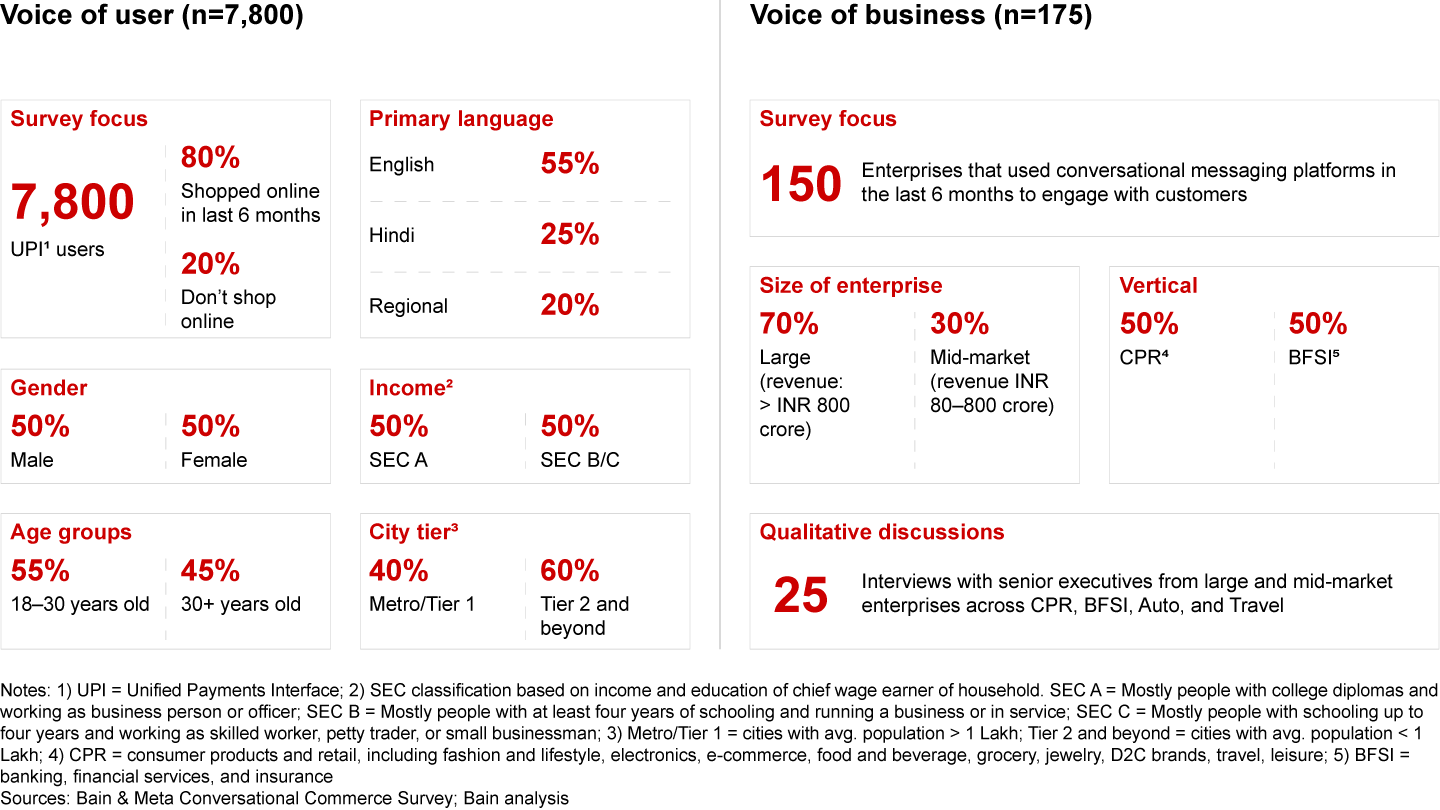

Building personalized relationships at scale
As in the past with Internet and app proliferation, the current generative AI-driven disruptions in the tech landscape are likely to spark pivotal changes in the consumer engagement model. More than 650 million Indians are already on social media and messaging platforms, many engaging informally with businesses across these channels. They have also shown a high preference to shift to conversation-centric journeys for day-to-day use cases. With generative AI-empowered tools potentially changing user interactions to be more multimodal, vernacular, and intuitive (i.e., humanlike), the consumer engagement model will evolve rapidly to more conversation-centric user journeys designed by businesses.
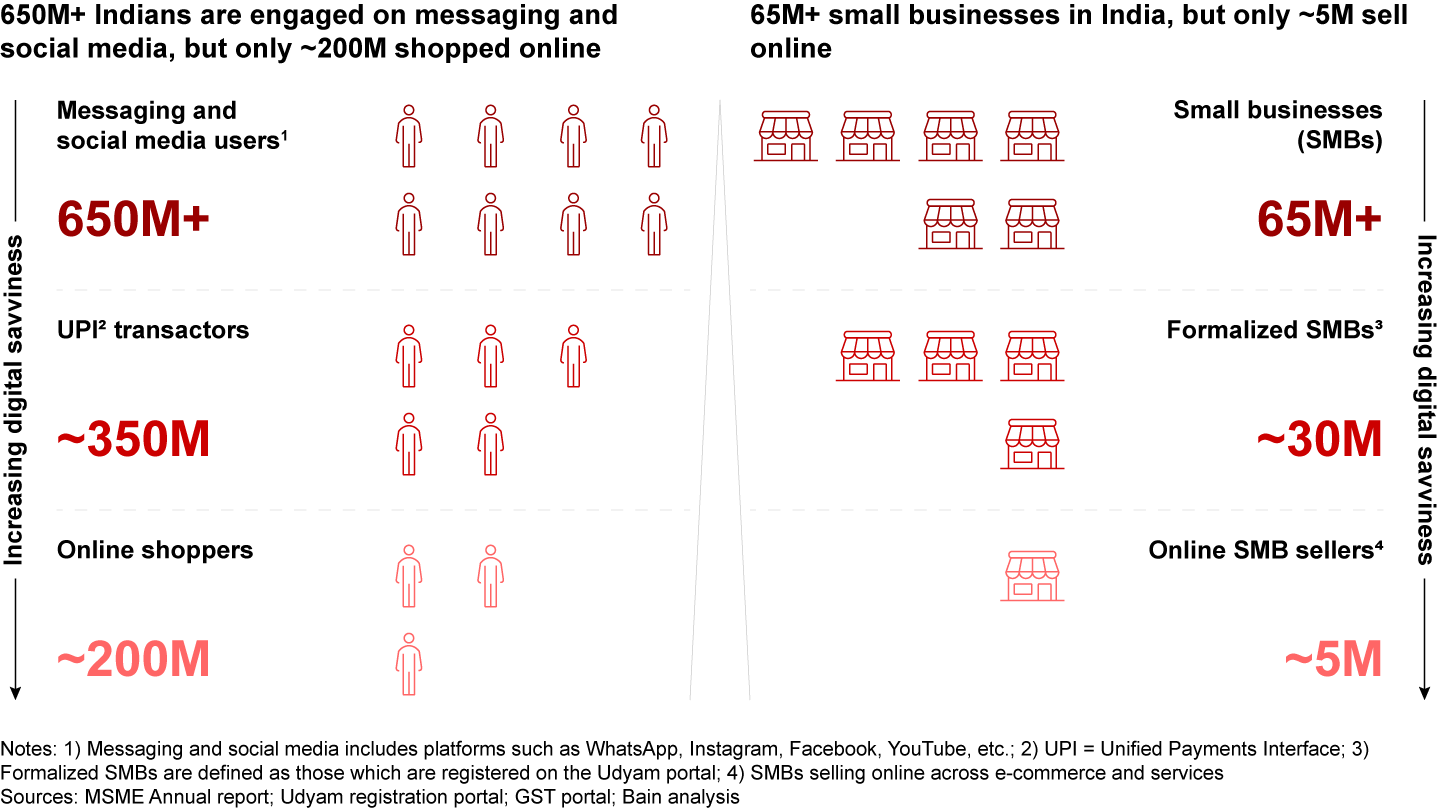

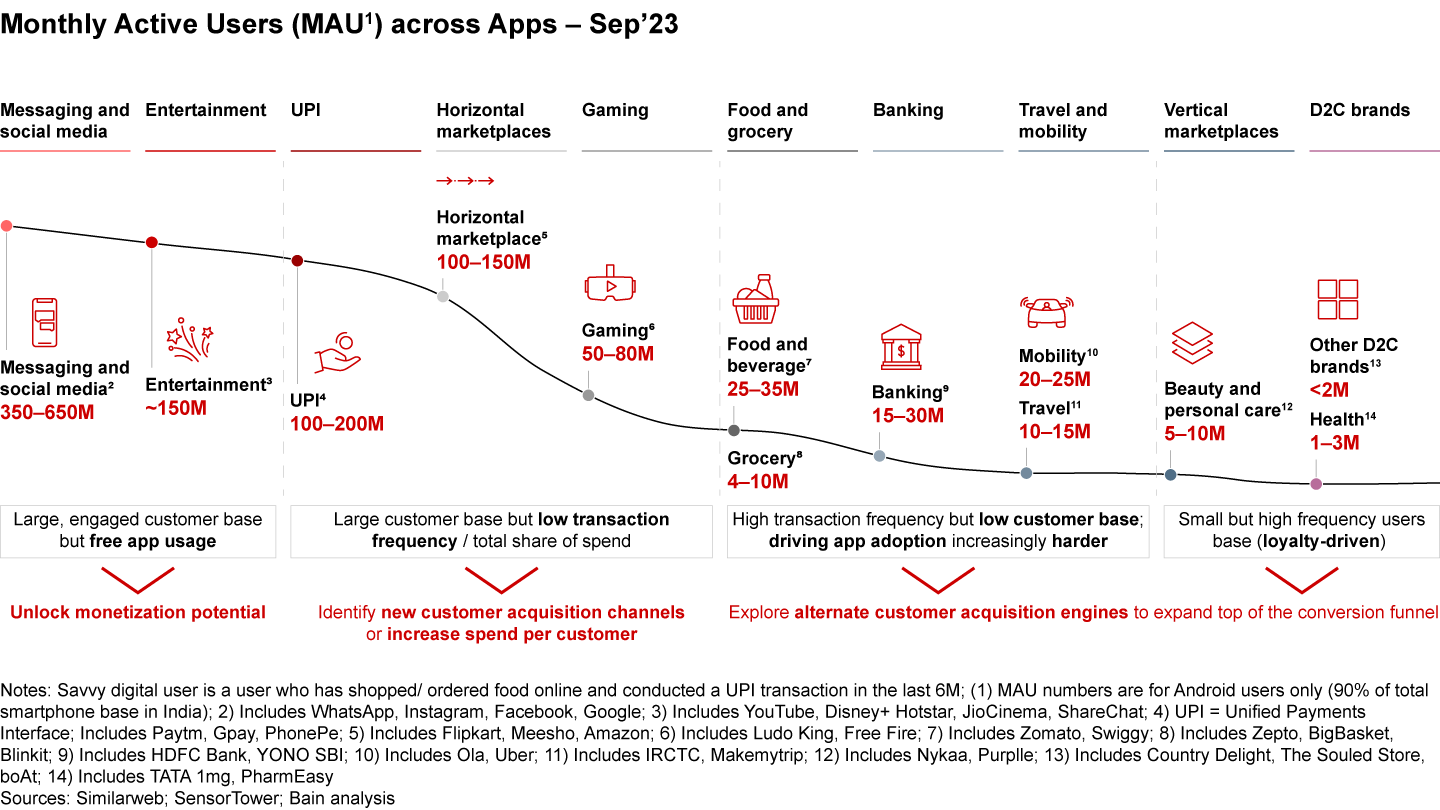

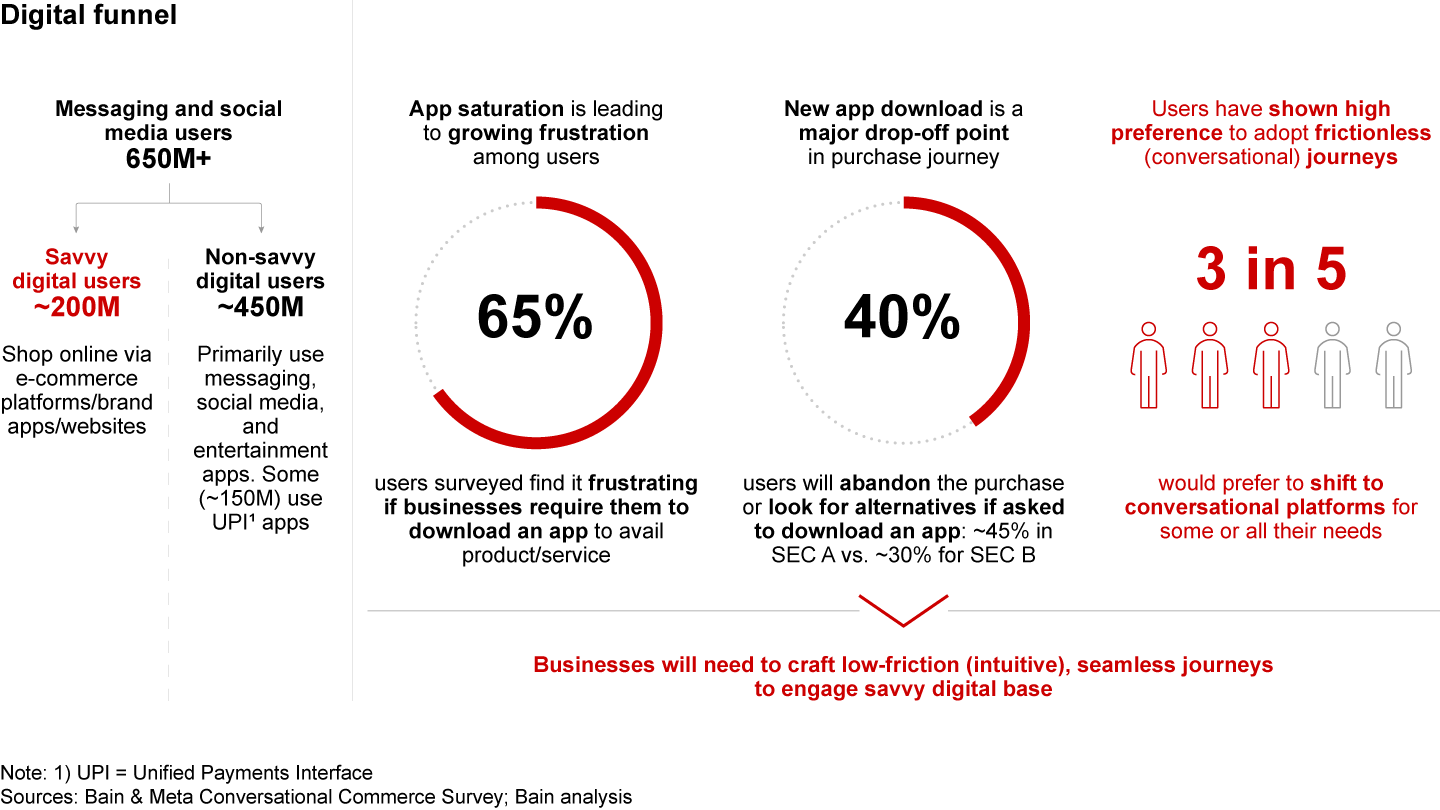



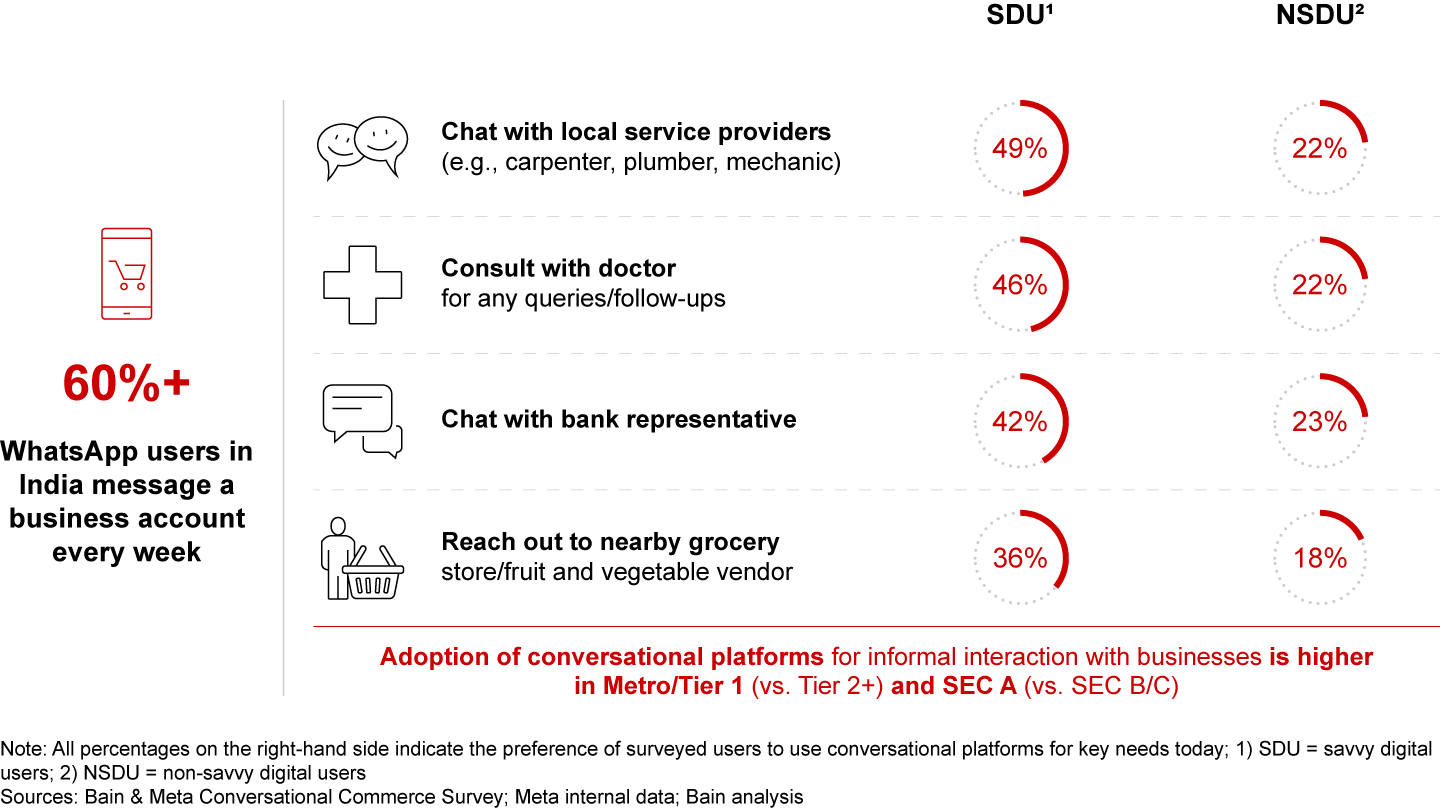



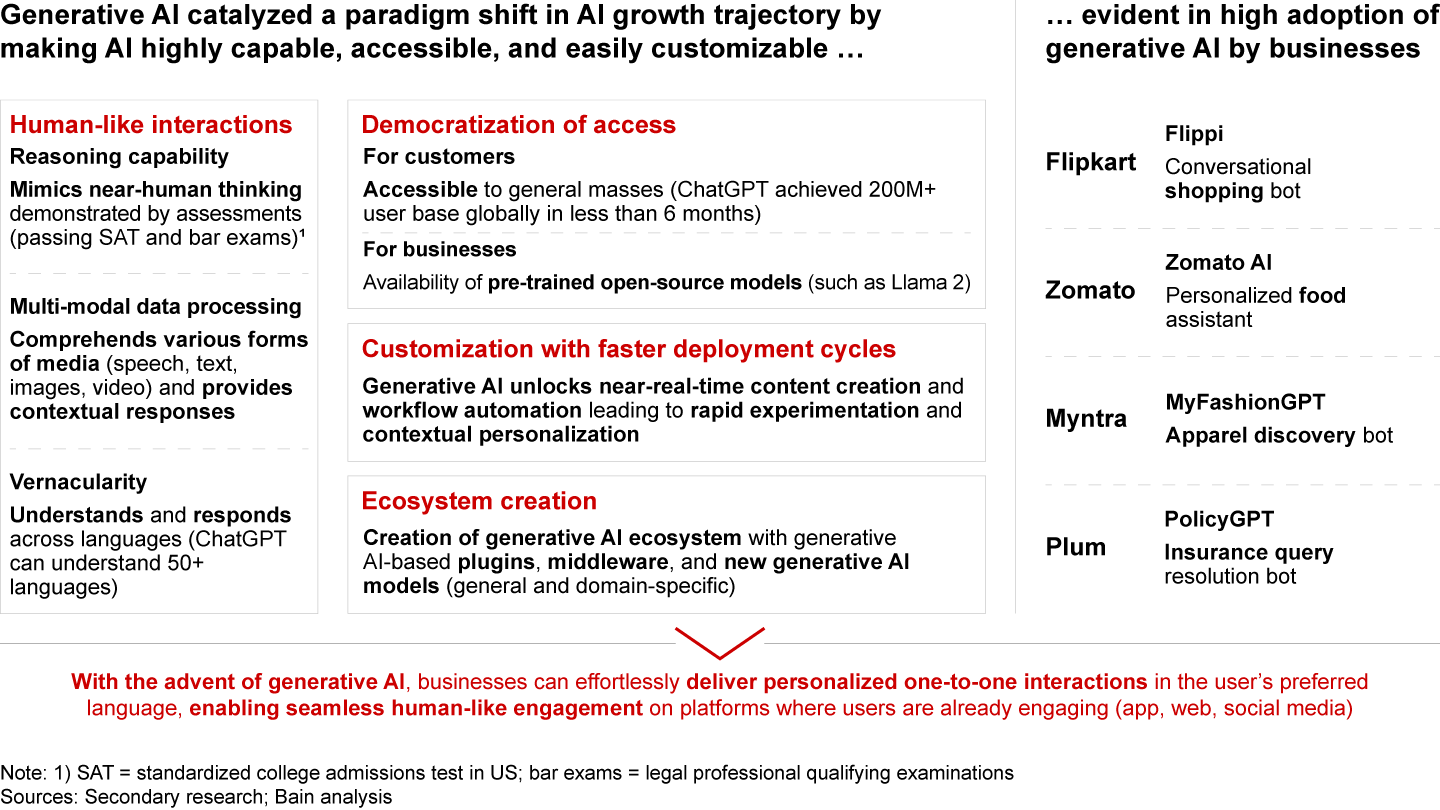

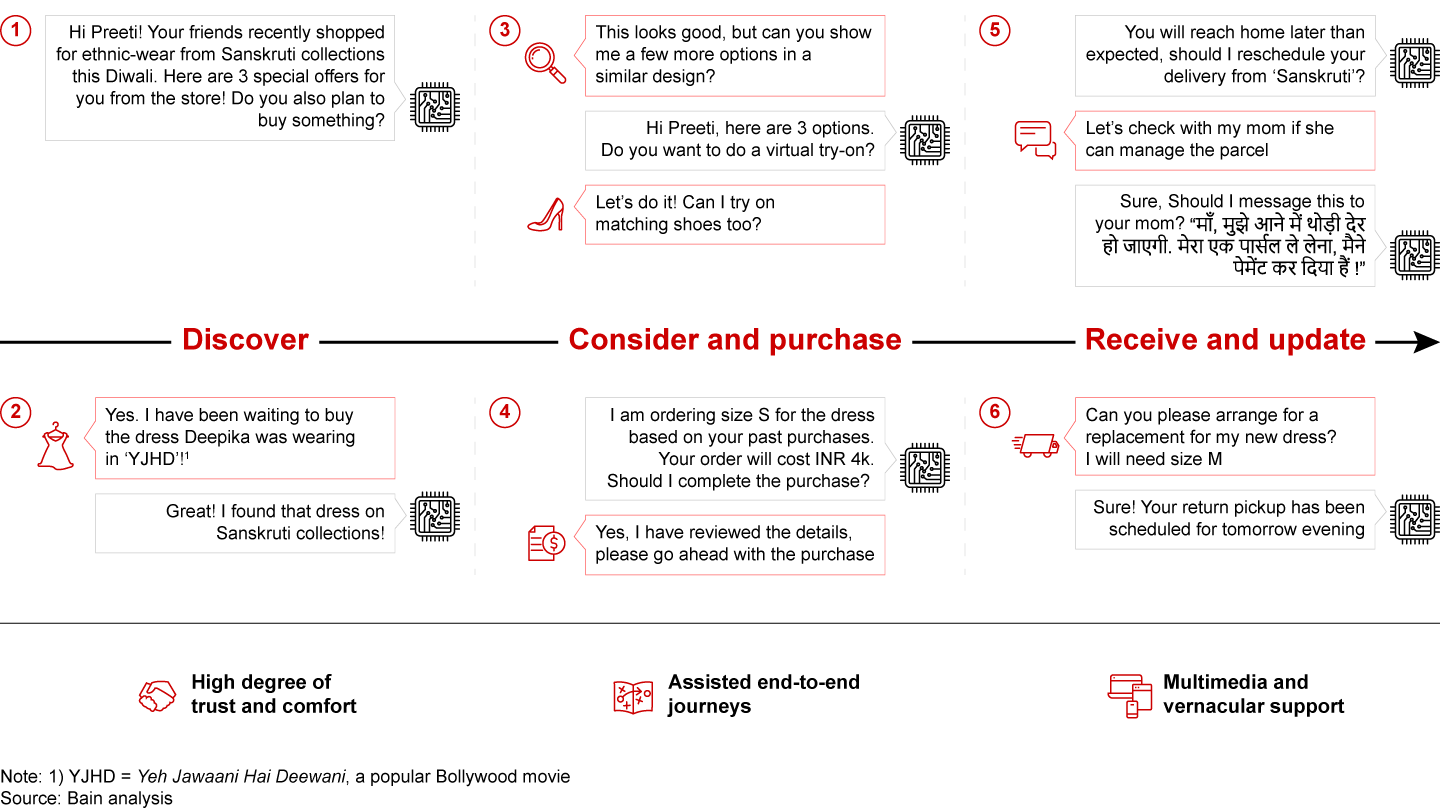

The conversational future
Businesses continue to engage consumers via traditional channels, such as SMS, email, and IVR, but they are actively looking for more effective alternatives with higher ROI and engagement. Large and small businesses are actively experimenting with conversational platforms and witnessing tangible benefits. With rising adoption and a high preference for implementing end-to-end conversational user journeys, we expect that these interactions between customers and businesses will redefine commerce.




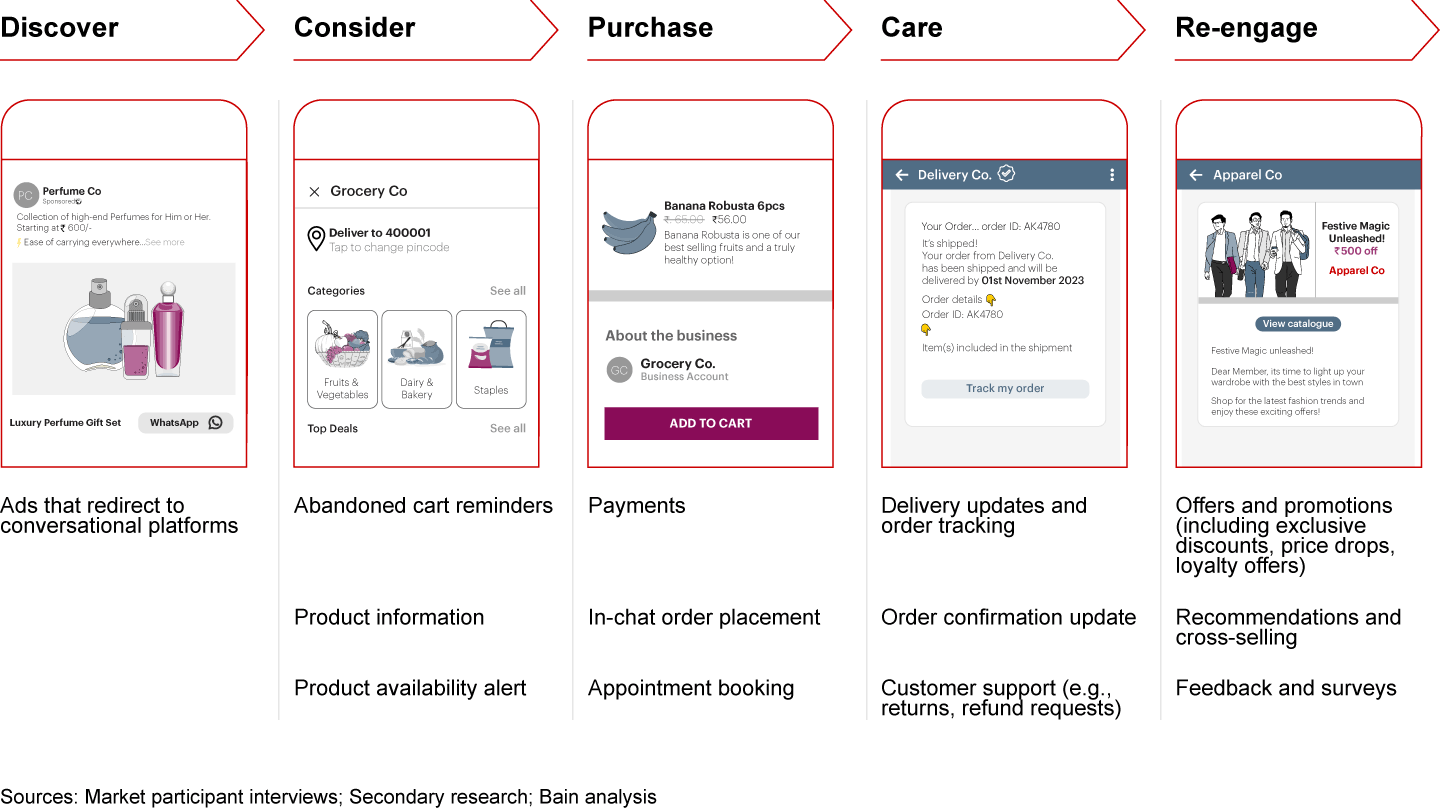



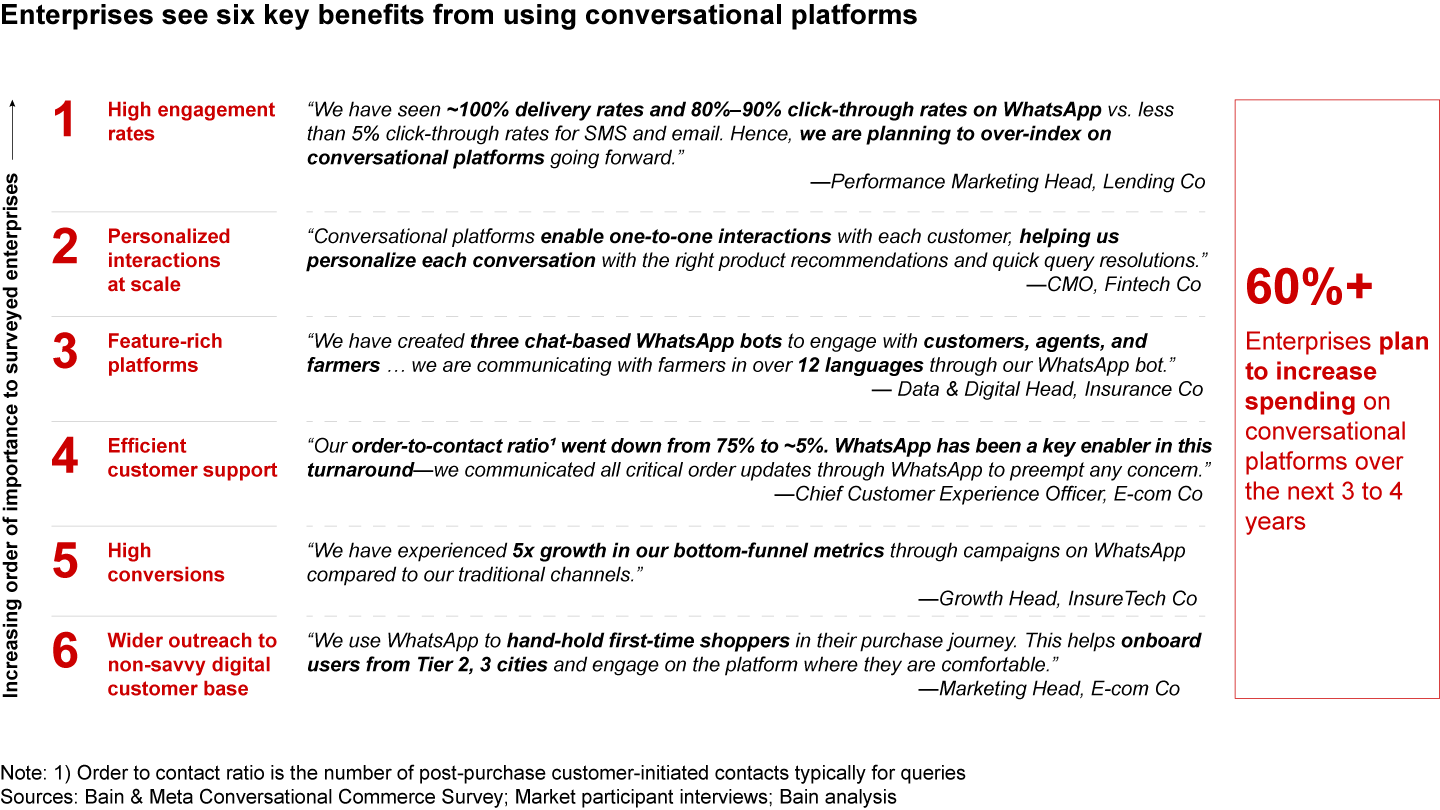

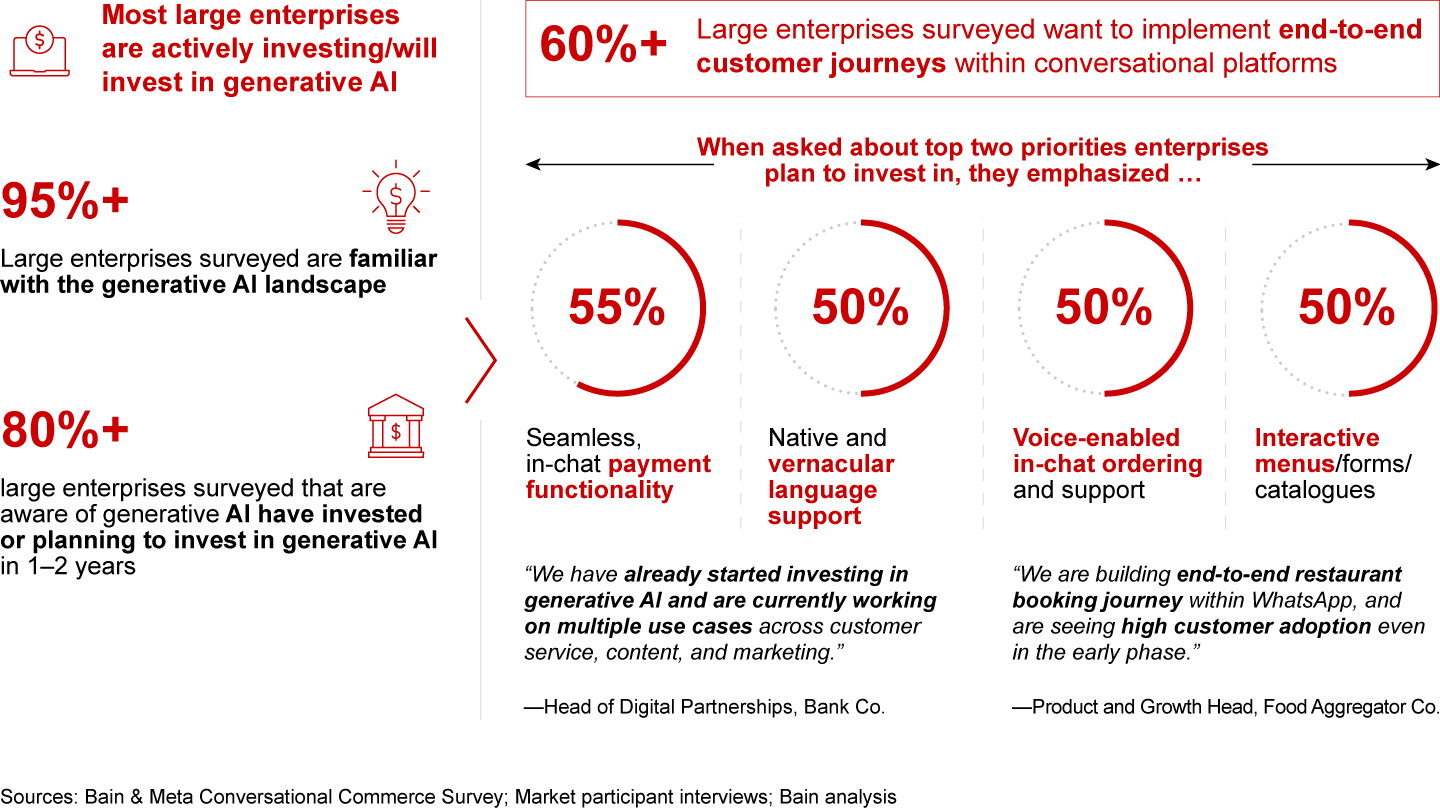

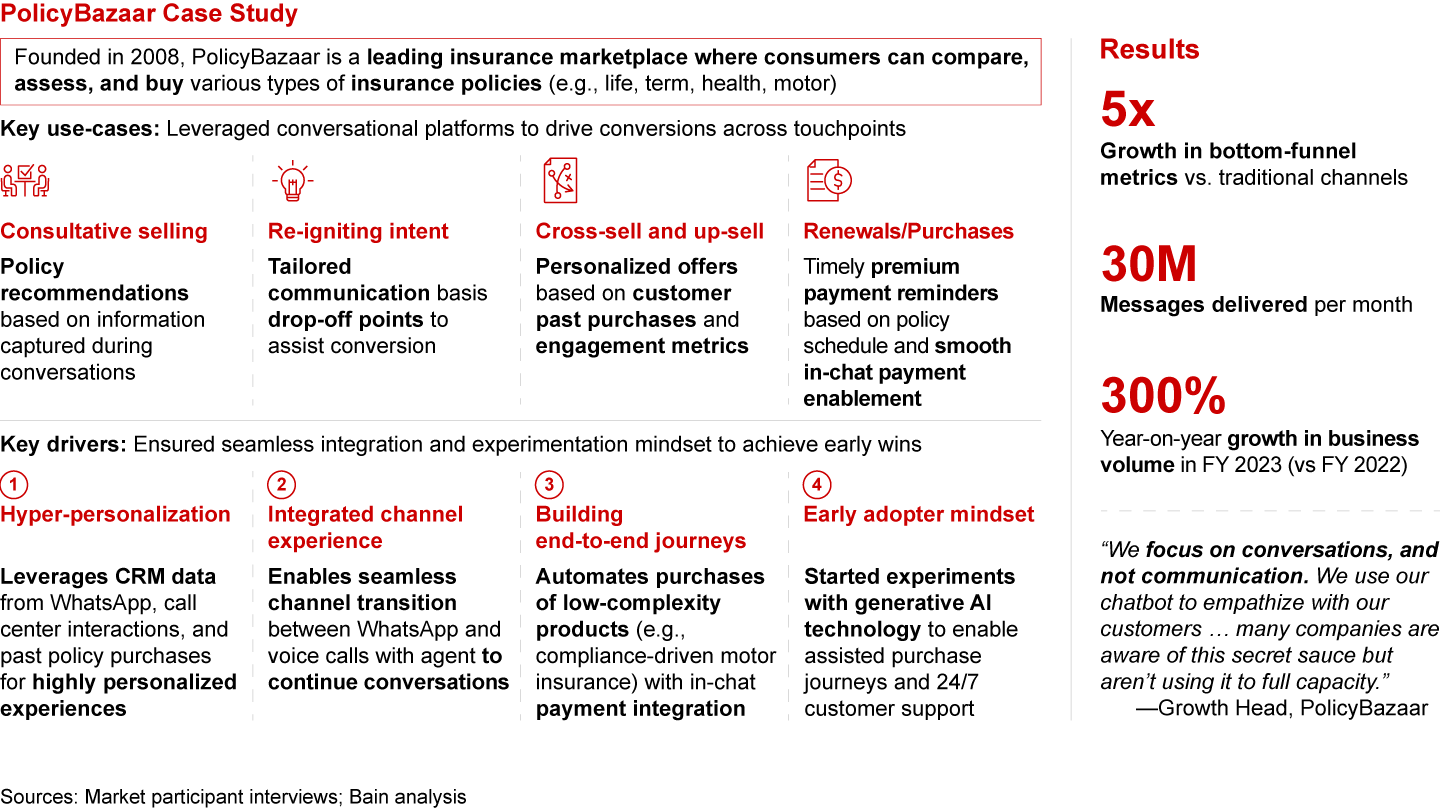

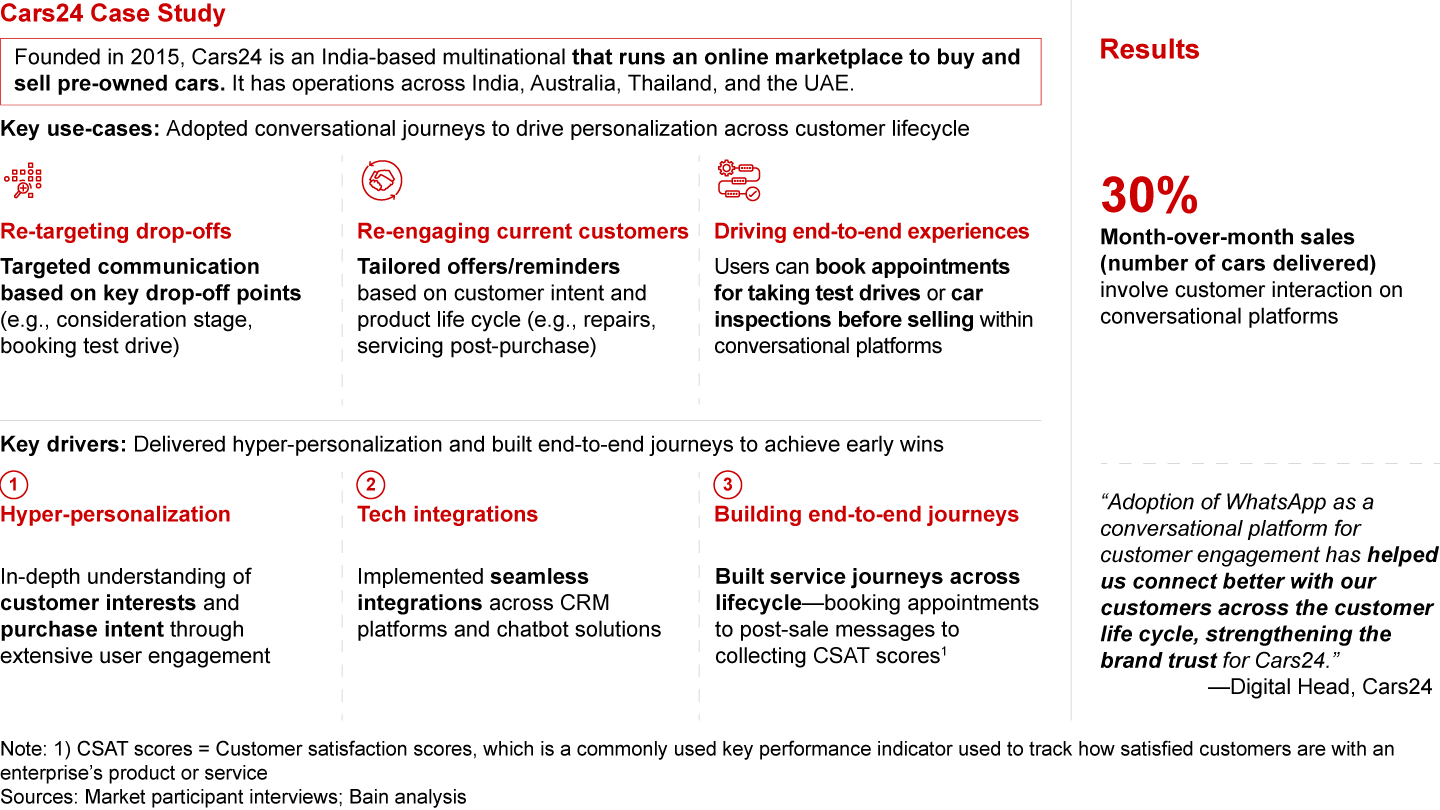



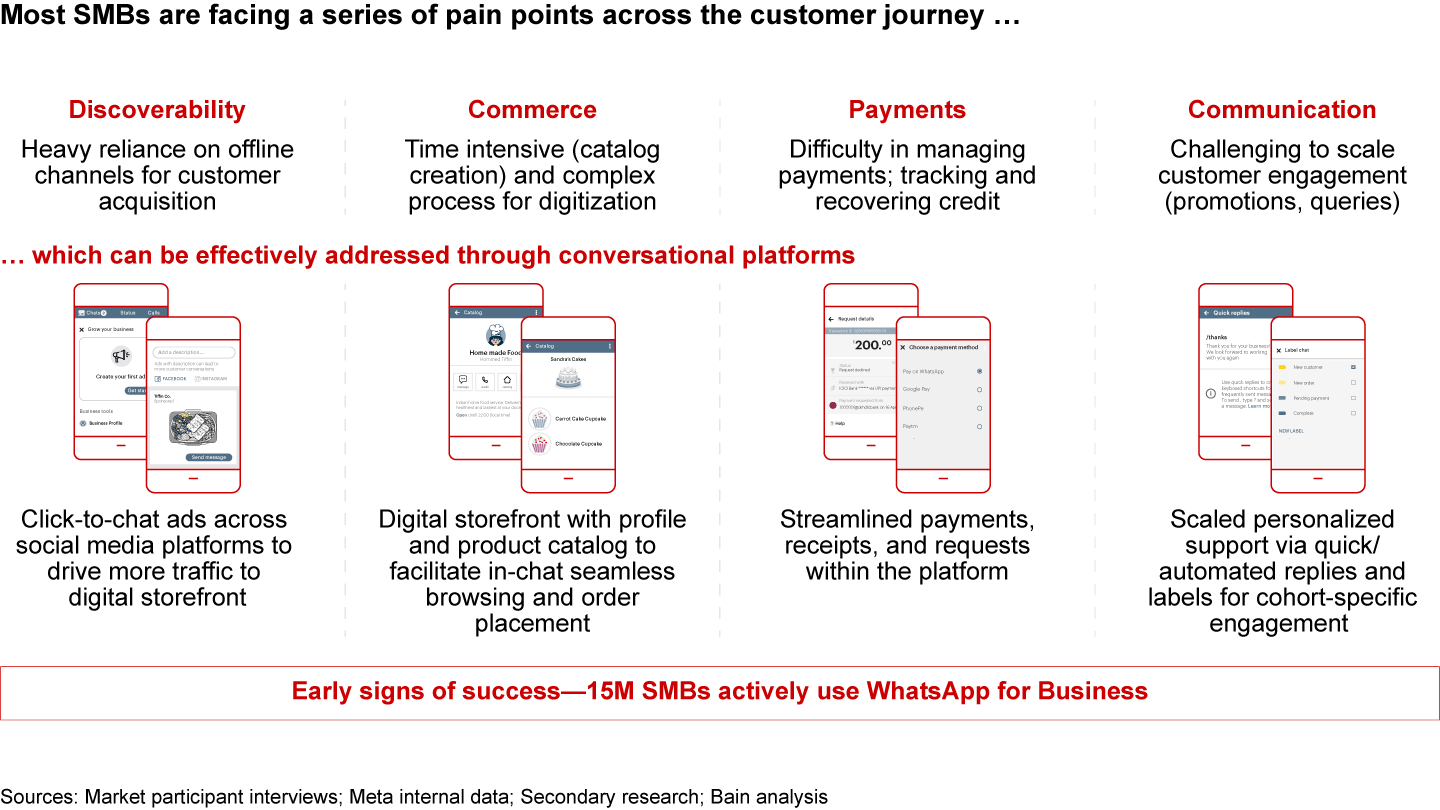

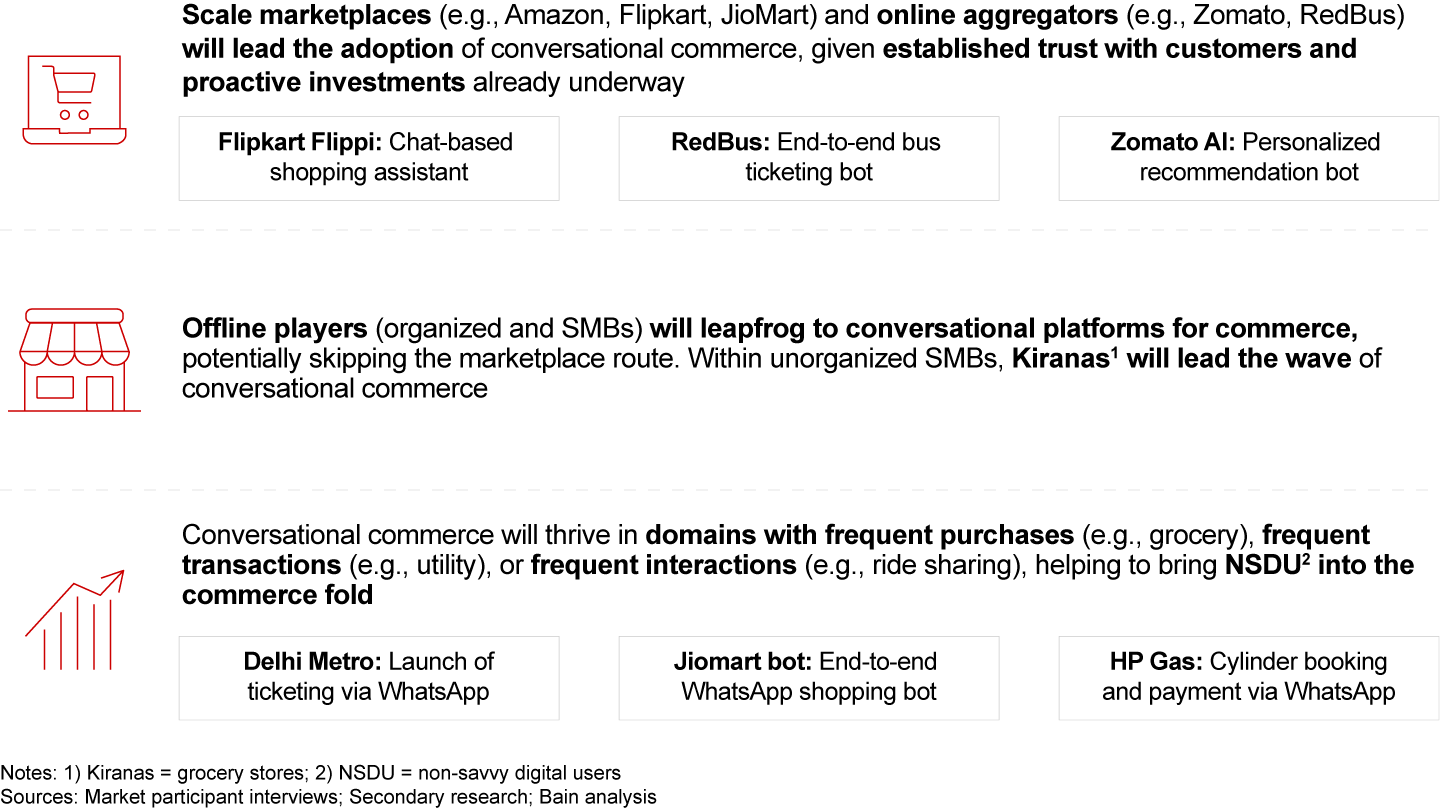

The winning playbook
Every business can tap into the power of conversation to win customers and be a part of conversational commerce. Businesses need to embrace two key imperatives—reimagining every customer touchpoint across the customer journey to deliver a hyper-personalized experience and reorienting the operating model to leverage the power of generative AI and identify conversations that matter to customers while generating returns for the business.


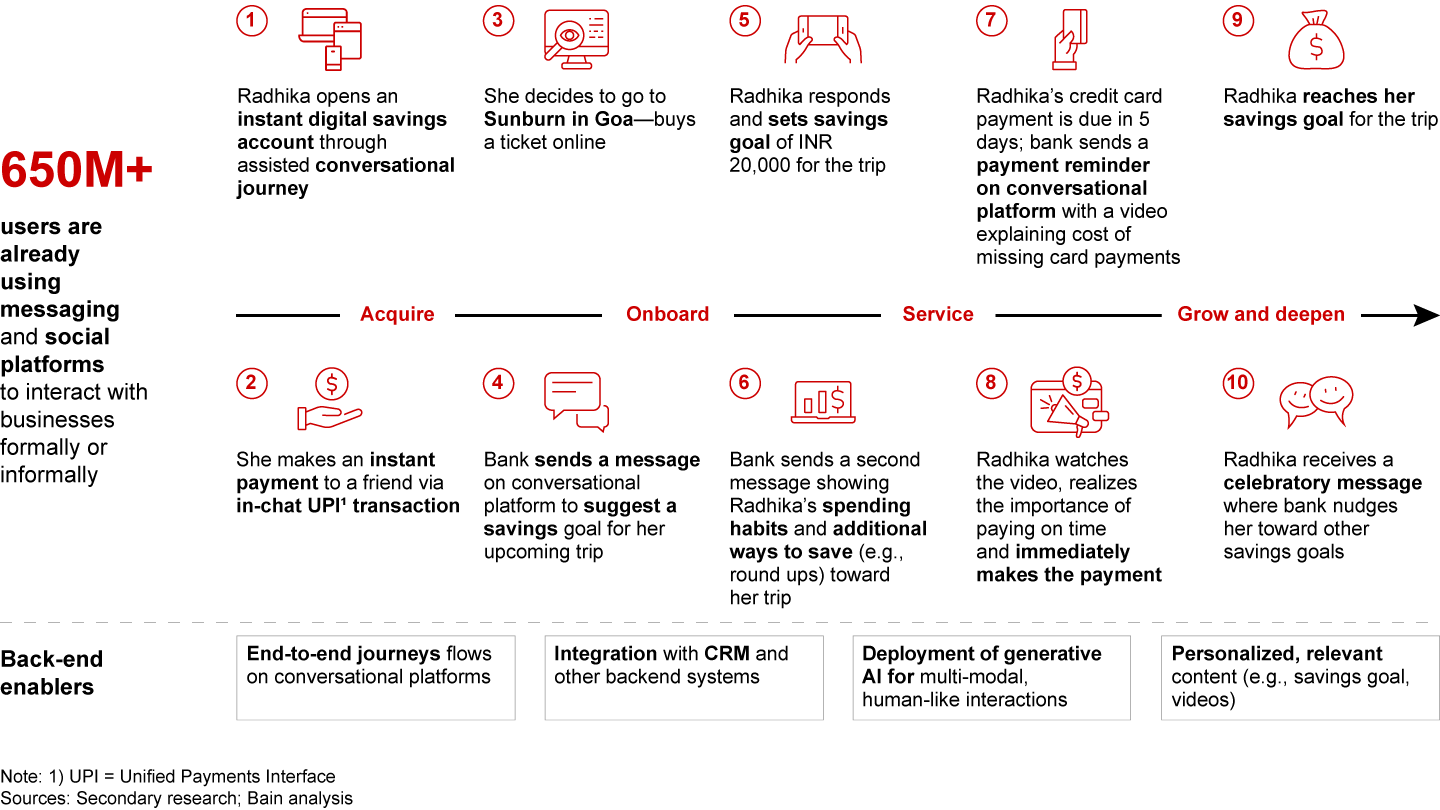





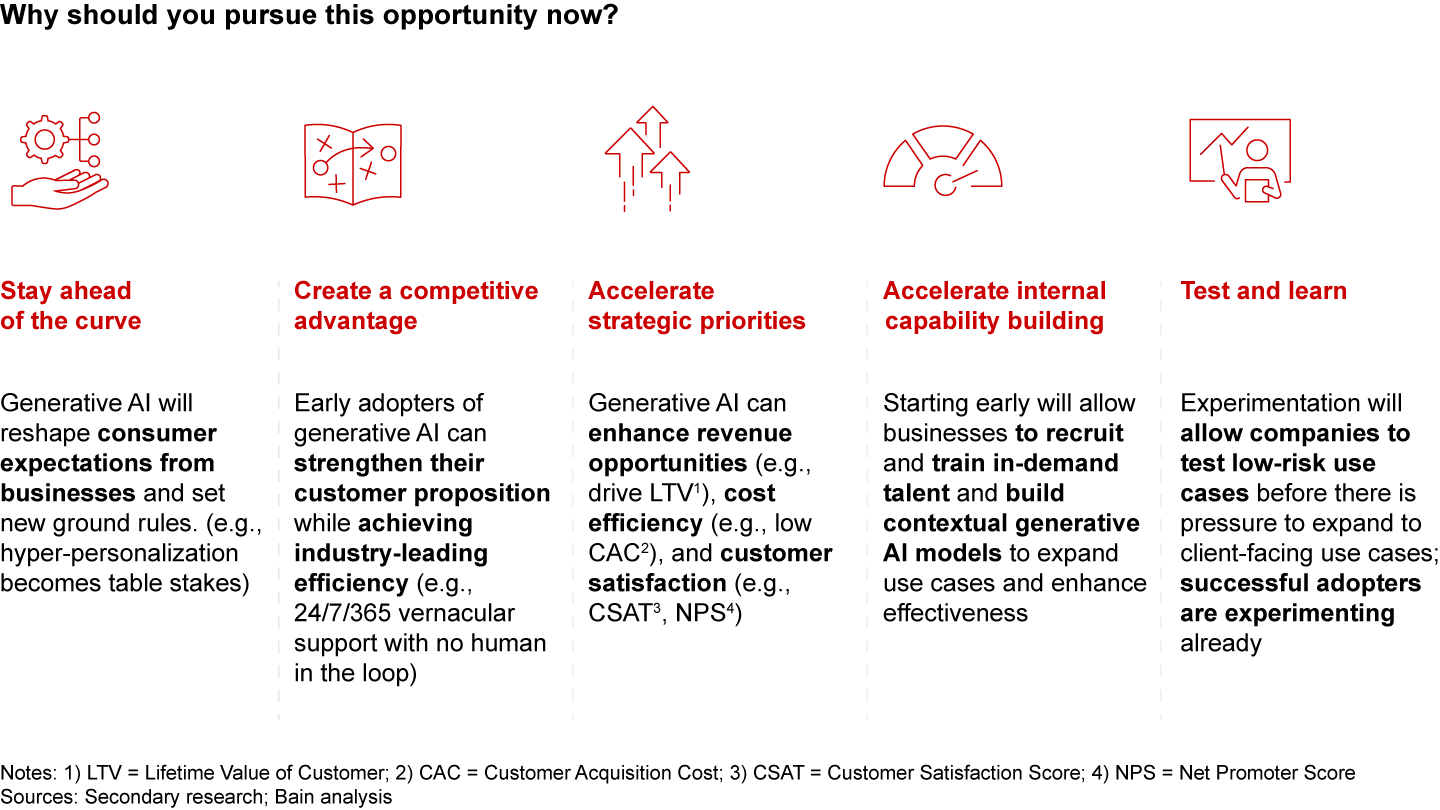



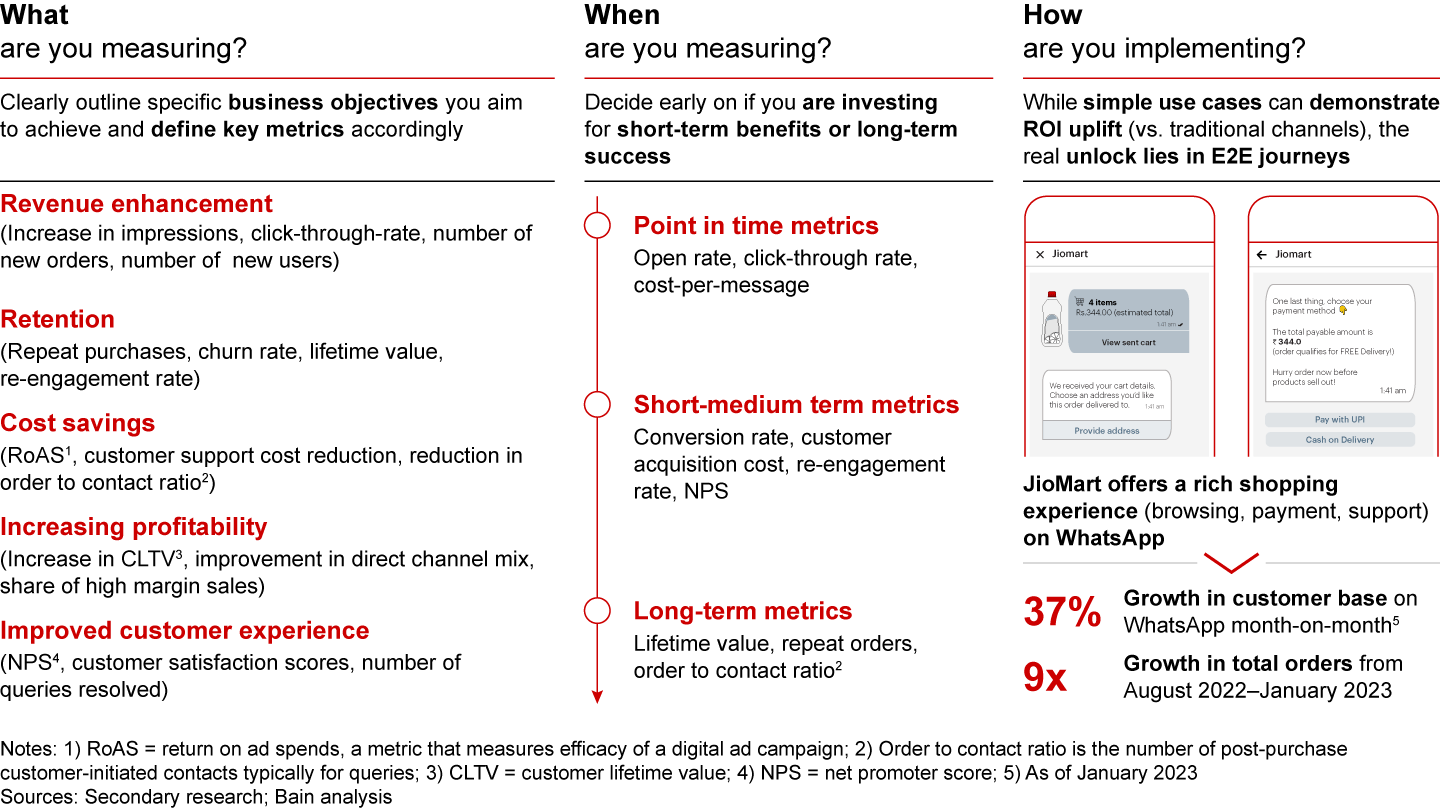


About Meta
Meta builds technologies that help people connect, find communities, and grow businesses. When Facebook launched in 2004, it changed the way people connect. Apps like Messenger, Instagram, and WhatsApp further empowered billions around the world. Now, Meta is moving beyond 2D screens toward immersive experiences like augmented and virtual reality to help build the next evolution in social technology.